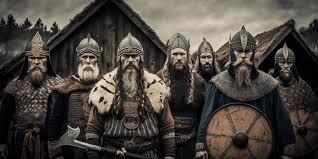#GustavMalmström
Explore tagged Tumblr posts
Text
Something about Vikings
In the popular imagination, the typical Viking warrior is depicted wearing a large horned helmet. However, representations from that era do not show any evidence of such headgear. Despite their widespread portrayal in this way, there is no historical proof that Vikings favored helmets with horns.
It remains intriguing to understand why horned helmets became such a defining symbol of the Viking people in modern pop culture. This iconography originated between the late 18th century and the early 19th century, when the Romantic movement brought Germanic and Norse sagas and mythology back into the spotlight. The idea of horns likely emerged among 19th-century Swedish writers or contemporary European painters, who based their reconstructions on Greek and Latin accounts. These accounts mentioned Norwegian and Germanic priests wearing horned helmets during specific pagan rituals over 2,000 years earlier.
In 1825, artist Gustav Malmström published an illustrated edition of the Saga of Frithiof, a Swedish poem by Esaias Tegnér inspired by events from the 8th century (although Tegnér’s source text dates back to the 1300s). This work gained immense international fame and sparked a fascination with Scandinavian peoples of the migration period that persists today. Malmström’s illustrations became iconic, and from 1825 onward, Scandinavians—frequently labeled as Vikings—were consistently depicted wearing horned helmets in every reproduction.

#VikingMyths#HornedHelmets#VikingHistory#RomanticEra#ScandinavianCulture#VikingIconography#PopCultureVikings#HistoricalMisconceptions#VikingWarriors#NorseMythology#VikingFiction#CulturalHistory#GustavMalmström#VikingSaga#NorseLegends
2 notes
·
View notes